AUSTRIAN TWO-STROKE SHOWDOWN: TC125 VS. 150SX VS. TC250 VS. 300SX
When Honda, Kawasaki, and Suzuki gave up on two-strokes, KTM and Yamaha kept going. KTM led the way by persistently making improvements to its two-stroke bikes. About a decade after the other three OEMs abandoned two-strokes, two-stroke engines started to make a comeback. They represent the roots of motocross. Their sound and smell can’t be mimicked, and their simple maintenance makes them easier to work on and more affordable to purchase. That is, until the Austrian group went electric with its smokers. Starting in 2023, the KTM Group traded kick-starters for electric starters, carburetors for electronic fuel injection, and spring-loaded power valves for geared electronic power-valve actuation. Was it a good choice? The answer to that question varies for each rider.
For some, these electronic advancements in two-stroke technology have been a net positive, while others are holding on tightly to their kick-starting, carbureted two-strokes, wishing KTM would take a step backwards to simpler times. Before it started fuel-injecting two-strokes, KTM produced the 125SX, 150SX and 250SX. Then, in 2023, the 150SX took a step back, and the KTM 300SX joined the lineup as the new technology was introduced. New for 2025, the 150 returns to the model list for KTM, Husqvarna and GasGas.
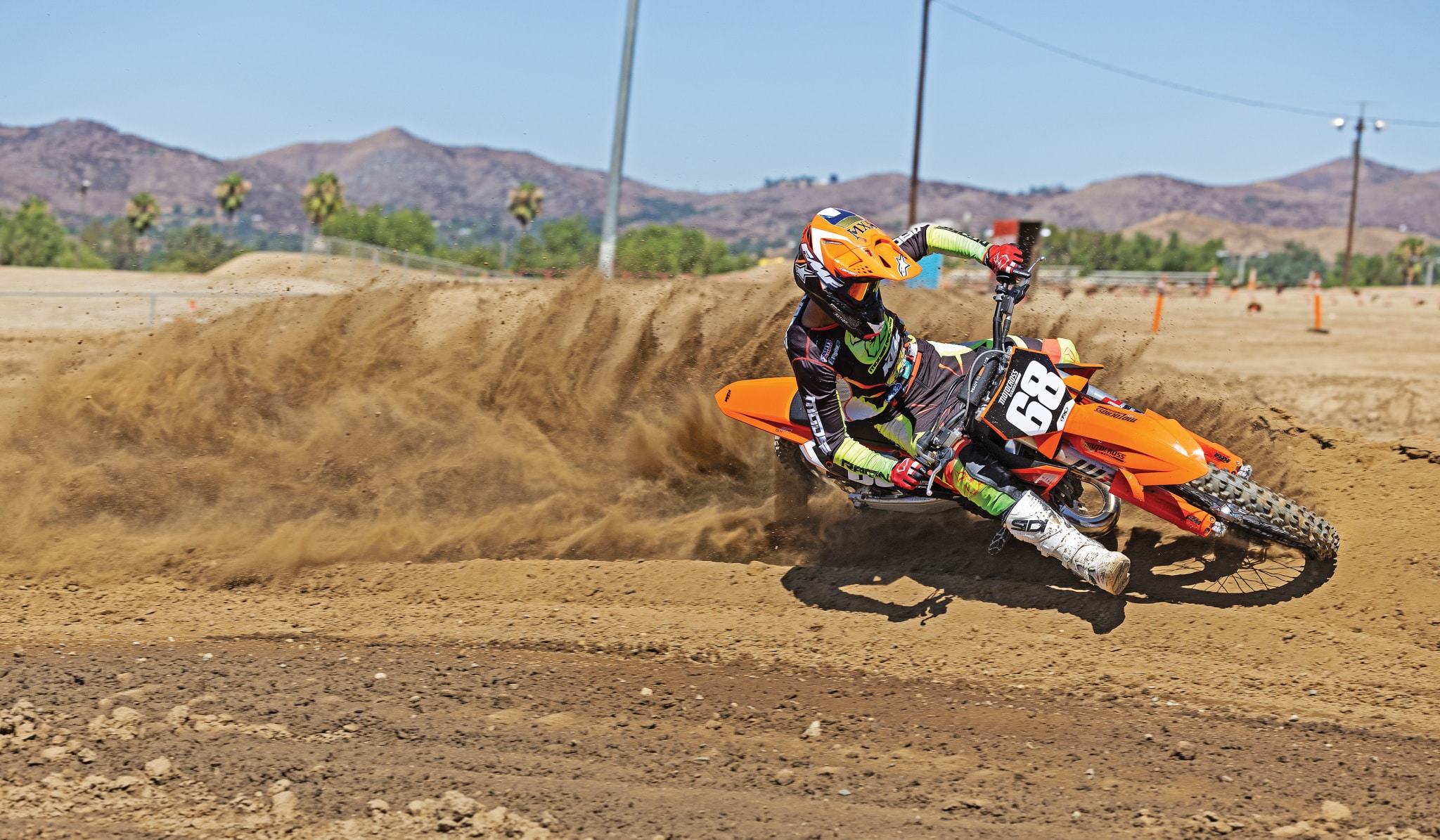
Both KTM and Husqvarna offer all four two-stroke models in 2025, with a few differences between the white and orange options. Compared to KTM, the Husqvarna features 10mm shorter forks, a different linkage ratio and a longer seal head on the shock. These changes shorten the suspension and lower the seat height by an inch. What does this mean on the track? It significantly boosts cornering prowess, enhancing traction in slippery conditions and allowing the bike to hold its arc around corners like a champion. It also provides more confidence for shorter riders. In our group, shorter riders and vet riders gravitate towards the Husky chassis, while intermediates and pros prefer the extra support of the KTM suspension.
Other differences can be found in the bodywork. The Husqvarna models have unique plastics, including a different fuel tank, seat base and a closed-off airbox cover, which slightly alters throttle response. Additionally, Husqvarna uses ProTaper handlebars in the flat and wide stock bend, while KTM uses non-branded Neken bars that are slightly taller and skinnier.
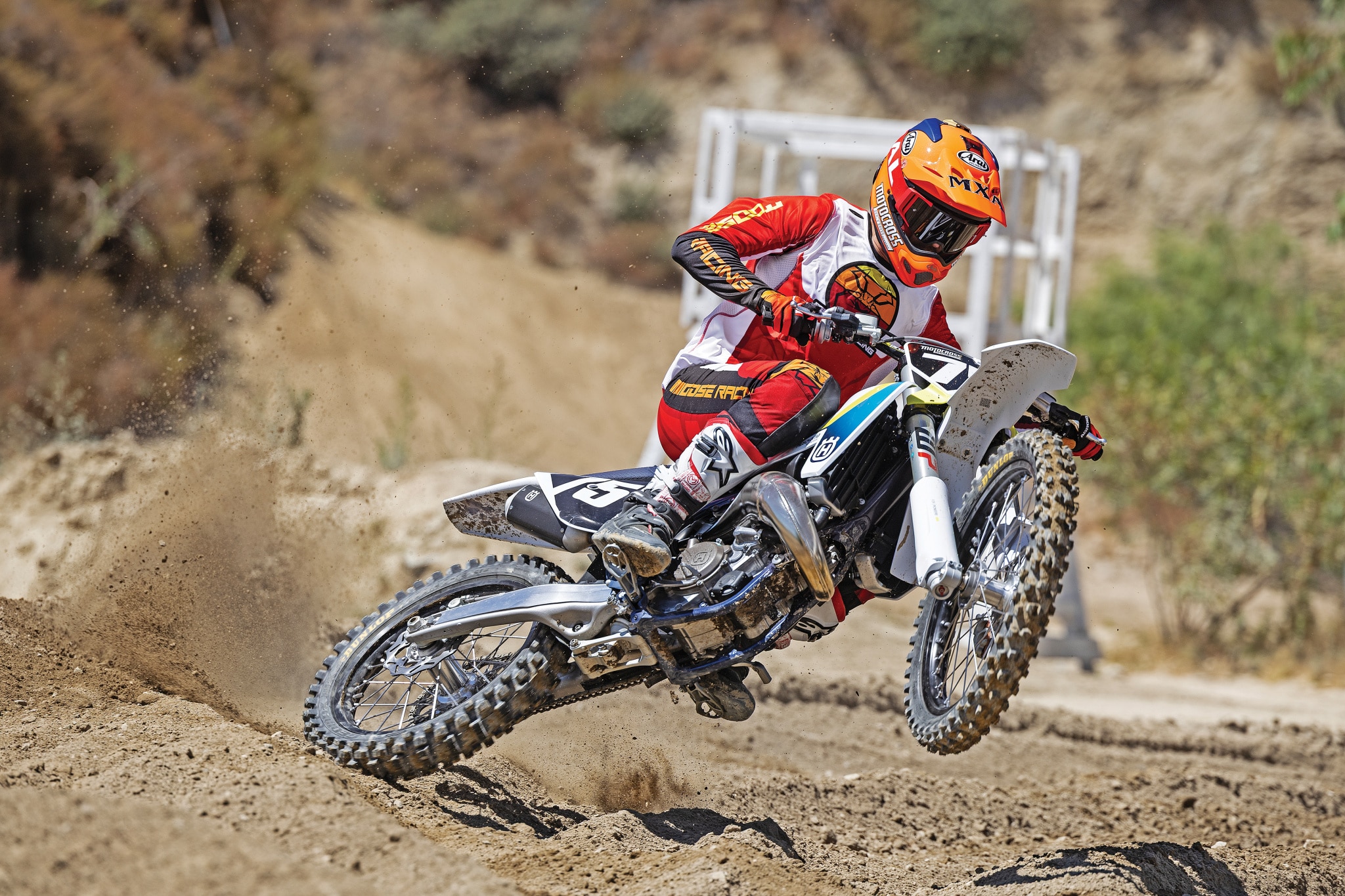
Both brands’ engines are fuel-injected, both come with electric starters, both feature WP XACT air forks and WP shocks, both are equipped with Twin Air filters and no-tools-required airbox covers, and both come with two ECU maps. They also share the same chromoly steel frame, CNC-machined triple clamps, swingarm and electronics.
In this test we are dissecting the four different options that KTM and Husqvarna offer for two-stroke big bikes, comparing the 125 to the 150 and the 250 to the 300.
2025 HUSQVARNA TC125 VS. 2025 KTM 150SX
 The 125 two-stroke will teach you how to shift often and carry momentum around the turns.
The 125 two-stroke will teach you how to shift often and carry momentum around the turns.
The Husqvarna TC125 and KTM 150SX are brothers, but they’re different. The TC125 is the shorter, straight-laced, rule-following teacher’s pet who always gets good grades and never gets in trouble, while the 150SX is the rowdier, long-haired, gym-going, meathead brother who is always in trouble. You can tell your friends you’re on a 125, and you can probably sneak it into the 250 class at some races—where nobody will protest you—but in reality, the 150SX isn’t allowed to be raced in many classes. You can’t race it in true 250 classes because the AMA handicapped the smokers by allowing four-strokes to have twice the displacement.
There are only a few places to race the 150. You can line up in the 450 class (which is a bad idea; we’ve tried it), or you can race the two-stroke Open class (which is also a bad idea when you’re lining up against the 250s and 300s). Glen Helen is one of the few tracks where you can race the 150 in its own class, thanks to Pasha Afshar and his Pasha 150 Open money-class races. Pasha puts up big money for the Pro, Over-30 Expert, and Over-50 Expert riders to line up on 150cc two-strokes at the Two-Stroke World Championships and Vet World Championships.
The main reason it’s not a 125 class is that Pasha doesn’t want to deal with cheaters and protesters. Allowing up to 150cc makes promoting a race much simpler. Plus, it gives the bigger guys a fighting chance.
When compared to the previous 2022-and-earlier carbureted 125 and 150 two-strokes, these engines run very differently. These bikes are easier to ride for novice-level riders because the bottom end rolls into the power more easily, thanks to the smooth operation of electronic fuel injection. On the flip side, these bikes are harder to ride for intermediate- and pro-level riders because they don’t have the same hit that traditional carbureted two-strokes have. Plus, the rev limiter kicks in on the top end sooner than you’d expect.
Rev limiters are necessary because electronic fuel injectors will continue to supply fuel until the engine goes kaboom. Unlike carbureted two-strokes, which rely on vacuum and air pressure to suck fuel through the carburetor, fuel-injected two-strokes rely on precise timing and metering. At excessively high rpm, the injector might not have enough time to properly atomize and inject fuel, leading to a lean condition and possible engine damage (detonation or overheating). Believe it or not, carbureted two-strokes have rev limiters, too, but they rarely hit them because the lack of fuel coming through the carburetor causes riders to shift early.
The fuel-injected bikes are also easier to maintain for less experienced riders because the ECU adjusts the mapping and timing on its own for different altitudes and weather conditions, eliminating the need for re-jet kits. On the flip side, it’s much harder to make engine modifications to the fuel-injected bikes for the same reason. The stock ECU setup is locked and isn’t meant to be re-mapped. Twisted Development and a few other tuners have figured out how to unlock the ECUs, but Twisted will only do it on the 250/300 models. They don’t see enough room for improvement on the 125/150 bikes without pushing the little engine into the danger zone. So far, the only mods we’ve made to our small-bore two-strokes have been installing pipes and silencers. In 2023, an aftermarket pipe was enough to make the 125 detonate, but the Austrians have since refined the mapping to at least handle an aftermarket pipe. (Read our test on the Scalvini pipe for the TC125 on page 44.)
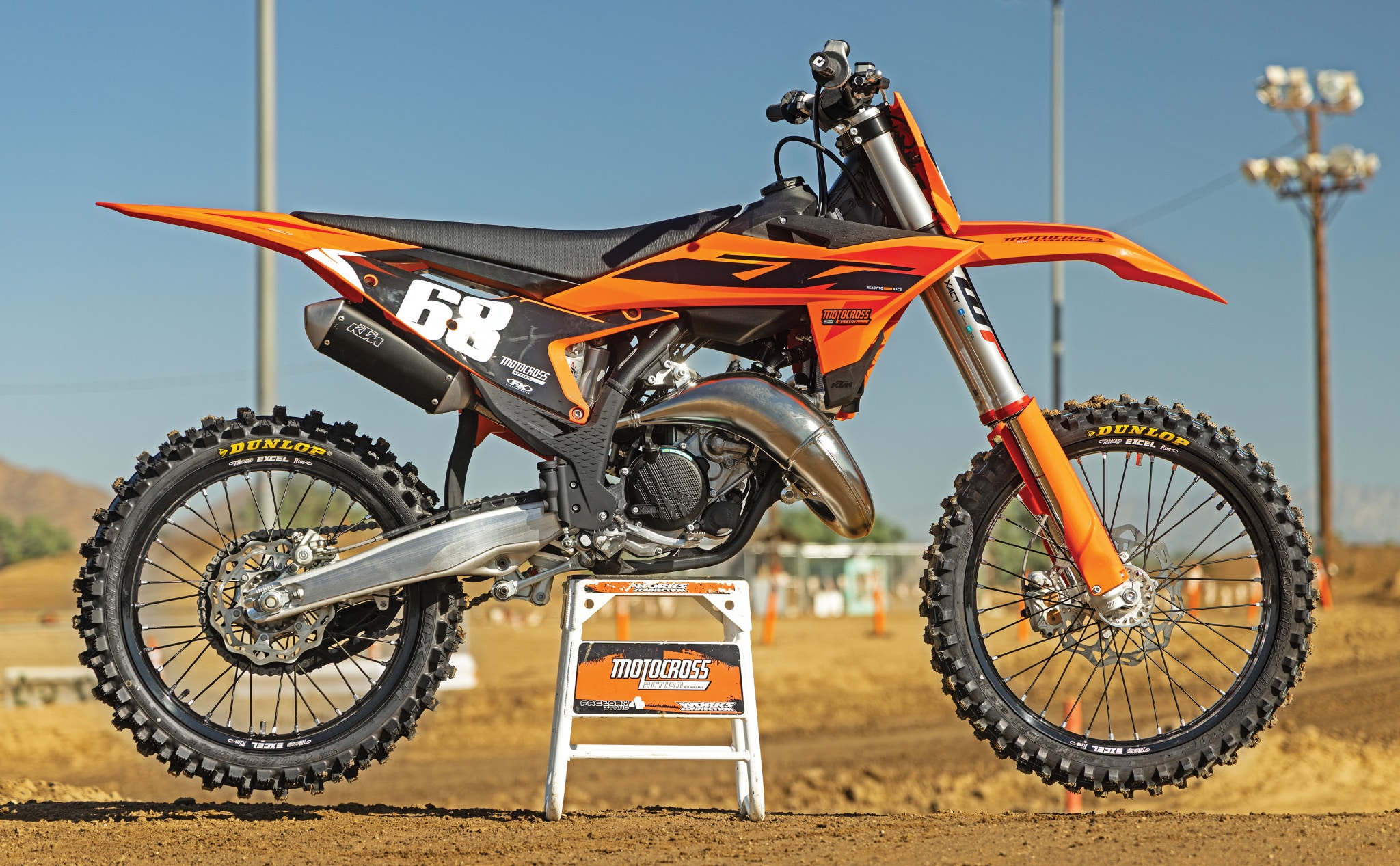 The KTM 150SX rides like it has a factory-built 125 engine, only it’s available for anyone to buy.
The KTM 150SX rides like it has a factory-built 125 engine, only it’s available for anyone to buy.
On the track, the 2025 Husky TC125 and KTM 150SX are similar in that they both require effort to keep them in the meat of the power. Historically, the Austrian 125 engines have made it easier for beginners and novices to learn the art of riding a two-stroke rather than the 150 engine. The 150 powerband packs more punch, but it does it in a shorter window. The Husky TC125 was fast in the higher gears but still rode like a 125, meaning you had to shift a lot to keep it in the rpm range. Second gear doesn’t pull very long, so extra shifting is required to keep the bike at an enjoyable pace. Fourth and fifth gears pull long, and it was surprisingly challenging to get the bike to full speed on a track, as our test riders still felt there was more to go. An extra tooth on the rear sprocket helps you get through the gears quicker, but it also makes you shift more. Carrying momentum was easier on the 125 than the 150, as the harder-hitting power on the 150 can throw you off balance if you’re not ready for it.
The KTM 150SX is much faster than the Husky TC125, and the biggest difference was noticed with shifting. The KTM stayed higher in the rpm range more easily, no matter what gear you’re in. A quick fan of the clutch and it was moving again. The 150SX had power to spare, while the TC125 was constantly being squeezed for everything it had. Because of the 150 power advantage, jumps came easier, and exiting corners was quicker, too. Surprisingly, our test riders had more fun on the 125 just because they could hold it wide open the whole time, but unanimously, they all chose to race the 150 if given the opportunity.
Overall, the target audience for the 150cc two-stroke is very niche. It’s tailor-made for professional practice riders—the guy who wants to look and sound like he’s riding a 125 while benefiting from the extra power that 25cc of displacement offers. It’s also good for the vet-novice rider who isn’t trying to light the world on fire with their race results—because they’ll be racing against 350s and 450s. Some die-hard two-stroke lovers never want to convert to four-strokes or electric bikes, but they also understand they don’t need the responsibility of a 250 or 300 two-stroke. For them, the 150 is the bee’s knees. However, if you’re a young rider making the transition from an 85 to a big bike, the 125 is the bike for you. It will teach you how to carry momentum, how to be smart with line choices and how to be quick with your shifting. Plus, you can race it in the Schoolboy 1 and 125 B/C classes, where it’s meant to be.
Finally, if you’re a serious racer, young or old, who is looking to be competitive, we recommend finding a carbureted 125 or 150. KTM and Husqvarna last made carbureted two-strokes in 2022, and GasGas’ last carbureted two-stroke was produced in 2023. In the 125/150 classes, the carbureted bikes have a clear advantage. The power comes on harder, they rev higher without hitting a rev limiter, all kinds of aftermarket parts are available for carbureted bikes, and the options for engine mods are seemingly endless.
 Lowered suspension equals higher cornering prowess. Our testers appreciated the Husky in the turns.
Lowered suspension equals higher cornering prowess. Our testers appreciated the Husky in the turns.
2025 HUSQVARNA TC250 VS. 2025 KTM 300SX
2023 was the first year KTM—or any major motorcycle manufacturer—sold a motocross-specific 300cc two-stroke. Why? It fits a niche market and can only be raced in the Open classes. It’s great for two-stroke Open races and for Vet classes that don’t have a displacement limit. But, it can’t be raced in the 450 Pro class at the AMA Nationals, nor can it be raced in the 450 B classes at amateur events like Loretta’s. We’ve seen many riders bore out their 250SX into a 300 (and we’ve built them ourselves), so we knew it would be a success when KTM introduced their 300SX motocrosser. However, we should note that this isn’t the first time KTM has sold a 300cc two-stroke. They’ve been making big-bore off-road two-strokes for a while now.
We should also mention that this isn’t the first fuel-injected two-stroke from KTM. KTM introduced XC “cross-country,” 300cc, fuel-injected two-strokes in 2018, but they use a different process. The Enduro models use transfer port injection (TPI) instead of throttle body injection (TBI). What’s the difference? The TPI setup uses two injectors to send fuel directly into the transfer ports of the cylinder, while the TBI system injects fuel into the throttle body. Both systems make for smoother two-stroke power, but the TPI system is not meant for motocross. The TPI setup was originally introduced to help meet emission laws in Europe.
 The 250 two-stroke engine isn’t as fast as the 300, but the mapping allows it to run cleaner.
The 250 two-stroke engine isn’t as fast as the 300, but the mapping allows it to run cleaner.
Like their two little brothers, the 250 and 300 two-stroke engines from KTM, Husqvarna and GasGas (too) use the same bottom ends. The 250 engine has a 66.4mm bore with a 72mm stroke, while the 300 has a 72mm bore and 72mm stroke, delivering an extra 43cc in the cylinder, bringing it to 293cc.
On the track, the story is similar to the 125-versus-150 scenario, where the smaller engine is easier and more fun to ride, and the bigger engine has more power and torque. Of course, both the 250 and 300 powerplants are very different from the small-bore engines. Where our test riders are harshly critical of fuel injection and electric starters on the small bikes, they are more forgiving with the bigger two-stroke engines. These bikes are significantly easier to ride than their carbureted predecessors. Where the 2022-and-earlier-model 250/300 two-strokes came on like a light switch, the new-age versions are much gentler off the crack of the throttle, making them more manageable—very four-stroke-esque.
 The 300SX runs just as a 300 should. It wants to be short-shifted and ridden in the mid-range.
The 300SX runs just as a 300 should. It wants to be short-shifted and ridden in the mid-range.
2025 KTM 300SX VS. 2025 HUSQVARNA TC250
Our test riders explained that the 300SX allowed them to be lazy around the track because the extra horsepower and torque allowed it, while the TC250 required more effort and created more excitement. Another consistent finding on the 250/300 platforms is that the 250 engine has mapping that’s more fine-tuned than the 300 in stock form. The 250 recovers easier when you make a mistake, while the 300SX takes a split second to get back into the power. The 250 runs better for two-strokers who like to rev, while the 300 wants to be lugged around, short-shifted and ridden lower in the rpm range. Like the 125/150 comparison, the 300 has more torque and more power than the 250, but it also has a shorter power window. When it signs off, it signs off harder than the 250 as well.
In stock form, our test riders actually liked the mellow map 1 (white map) because, even though it detuned the hit, it pulled longer. Map two (green map), on the other hand, hits harder and requires more effort from your left foot.
One nice aspect of the big-bore two-strokes is that Twisted Development has other map options available. We’ve tested maps on both the 250 and 300, with FMF and Pro Circuit pipes and silencers, and they make a big difference. Twisted’s maps made the new-age bikes feel more like traditional two-strokes with a harder-hitting power and brought third-gear turns back into the picture.
 With the WP XACT air forks, all of the KTM and Husqvarna two-strokes can easily be adjusted, but they can also easily be messed up. Check your air pressure regularly.
With the WP XACT air forks, all of the KTM and Husqvarna two-strokes can easily be adjusted, but they can also easily be messed up. Check your air pressure regularly.
While it’s true that Twisted Development can re-map the ECUs on the big-bore bikes, these bikes are still limited when it comes to engine mods. They’re great if you want to keep your bike stock, but if you’re a rider who finds as much joy in building a bike as you do riding it, then you’ll be better off on a carbureted two-stroke; this engine wants to be left stock.
If you’re looking to race in regulated 450 classes, and want a fun and exciting bike, the 250 two-stroke is the bike for you. Or, if you’re a vet rider and usually race in Open classes, and you like the idea of a tractable, luggable, short-shifting two-stroke power, the 300 is where it’s at.
On the chassis side of things, the decision is simple. The lowered Husqvarna is better for turning and better for shorter riders, but the stock suspension valving is softer and has less hold-up than the more race-ready KTM. Pick the Husky if you want softer suspension, and pick the KTM if you want racier suspension. Or, pick whichever color suits your style and have your suspension tuner handle the rest.


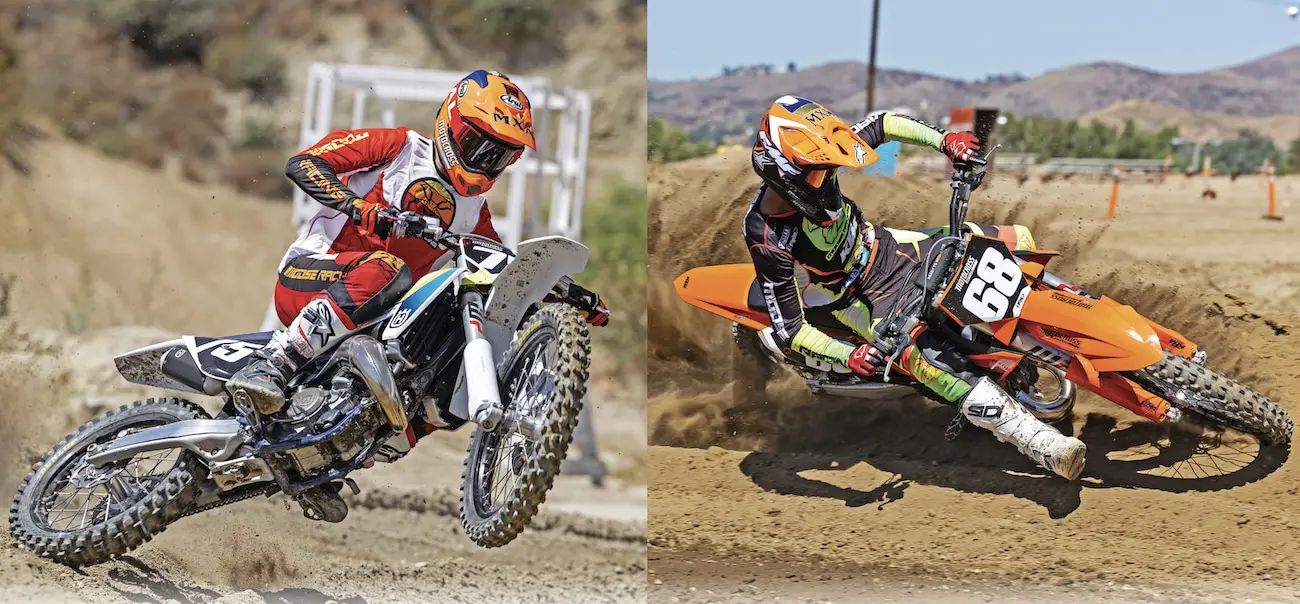


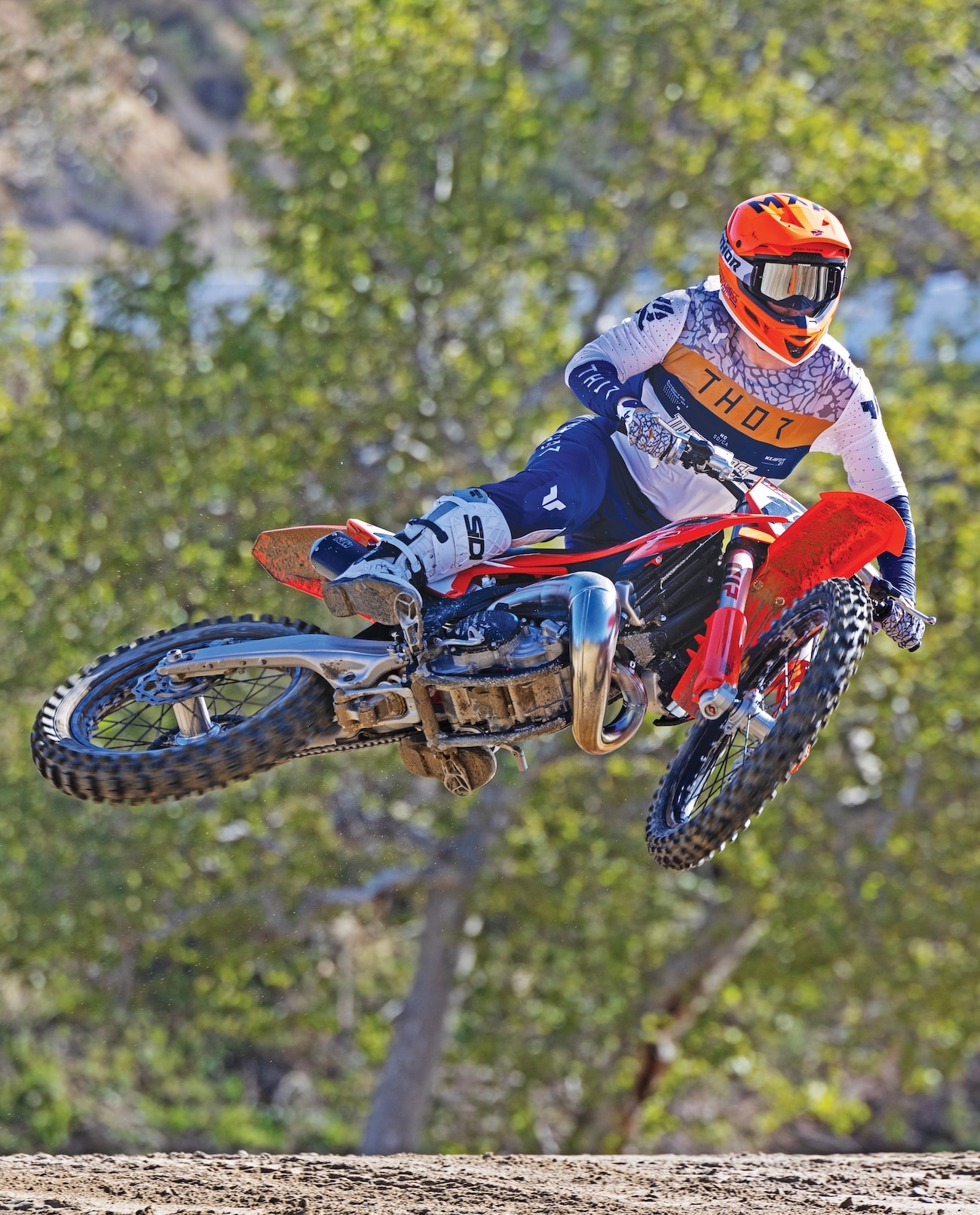
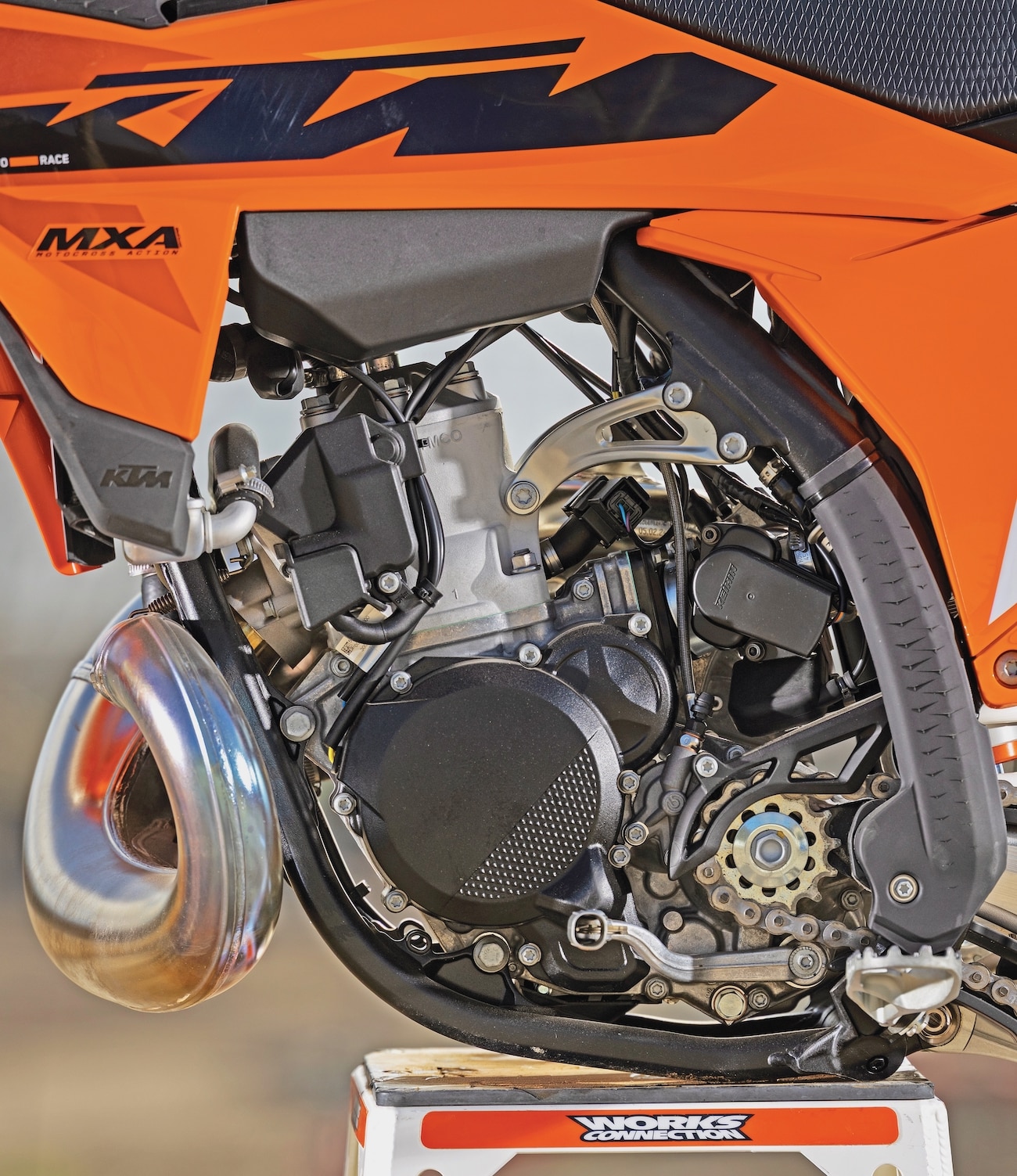

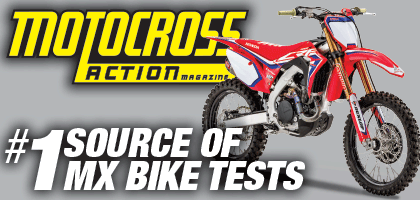


Comments are closed.